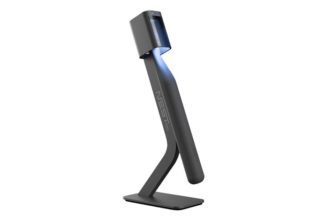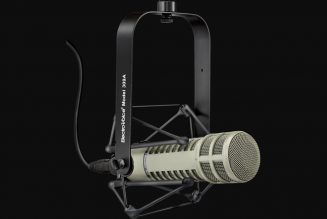Metric units have conquered the globe, but in the US and the UK, their presence has become part of a culture war between ‘traditional’ and ‘progressive’ values.
Share this story
Casing the joint is an essential part of any heist movie. The protagonists arrive on the scene, dressed suitably incognito, and do their best to blend in while keeping one eye on their target: a historic painting with emotional significance for the hero, perhaps, or a jewel of unrivaled clarity and brilliance, too tempting not to steal. These were the sorts of treasure floating through my mind as I sat in a pub on a dull October afternoon, reconnoitering a much more mundane target: a wrought iron signpost.
The signpost, standing on the other side of the street and quite unaware it was under careful surveillance, couldn’t lay claim to much historic significance or monetary value. In fact, it wasn’t of much interest to anyone unless they happened to be passing through the town of Thaxted in southeast England and wanted to know how many meters it was to the historic windmill. What made this signpost noteworthy was that it had come to the attention of a vigilante group known as Active Resistance to Metrication, or ARM. Their motivation? To stop the adoption of metric units in the UK and preserve the country’s traditional imperial measures. Their method? Waging a guerrilla war against metric road signs and signposts: unscrewing them in the dead of night, stowing them in hedgerows, or amending them using paints and stickers.
:format(webp)/cdn.vox-cdn.com/uploads/chorus_asset/file/24351777/Beyond_Measure_Norton_US_Cover.jpg)
This story is adapted from Beyond Measure: The Hidden History of Measurement from Cubits to Quantum Constants. Buy it here.
Since ARM was formed in 2001, its members claim to have removed or altered more than 3,000 signposts across the country, striking in country villages, seaside towns, and even the nation’s capital. I’d traveled to Thaxted to meet with, what I was beginning to suspect, was the totality of ARM’s active membership. His name was Tony Bennett, and he was sipping a pint of cider while explaining to me the link between his evangelical Christianity, his Euroscepticism, and his idiosyncratic campaign against metric measures. When Tony first met me off the train from London, he was sitting on a low wall and eating an early lunch out of a faded plastic ice cream container. He struck me as a kindly figure; his old-fashioned glasses, V-neck jumper, and stiff gait reminding me of my own grandfather. The more we talked, though, the more I realized that Tony was a fanatic, albeit a quiet and bookish one equipped with a clipboard and notebook.
It all went back to Nimrod, he was saying. Nimrod, great-grandson of Noah and the “mighty hunter before the Lord,” who had attempted to unite the world’s population by building the Tower of Babel so that humanity might climb up to Heaven itself. “And God intervened, stopping him from building the tower,” said Tony. God then spread humanity across the globe, dividing us up into different nations with their own languages and traditions. As Tony understood the message of the Tower of Babel, it was that “People should live in distinct nations because it provides a unifying force in their lives. It gives them a sense of purpose.”
:format(webp)/cdn.vox-cdn.com/uploads/chorus_asset/file/24277509/DSCF0048.jpg)
It was this purpose that prompted Tony to join the UK Independence Party in 1997 — a first step toward his interest in preserving the country’s traditional weights and measures. “I saw them campaigning in Harlow and thought to myself, ‘Weirdos,’ but I picked up one of their leaflets anyway,” he says. He would later become a solicitor for the party and political secretary to its leader from 2000 to 2002, Jeffrey Titford.
“When I came to look closely at it,” he told me later, “the more it appeared to me that the European project was a deliberate attempt to reverse what happened at Babel. To say that the idea of the nation-state is redundant and that what we need to build is a strong international organization, perhaps even a one-world government.”
Fighting against this tendency meant not only getting out of the EU, he says, but combating other aspects of pan-European integration, from the adoption of a single currency, the euro, to the use of metric weights and measures across the continent. More concretely, he told me, it meant changing the units on this signpost in Thaxted. It meant fighting for England, inch by inch.
a:hover]:shadow-highlight-franklin [&>a]:shadow-underline-black dark:[&>a:hover]:shadow-highlight-franklin dark:[&>a]:shadow-underline-white md:text-30″>“The most famous bunch of bananas in English legal history”
The existence of ARM may seem, at first, like a peculiarly English eccentricity. After all, does anyone really care that much about measurement? But when you look into the details of metrology — the science of measurement — the surprising answer is “just about everybody.” We just don’t talk about it enough. In my research into the history of measurement, I discovered that this discipline is not merely a distraction for pedants but a founding technology of human civilization. Without our ability to measure, we simply could not function as a society. We could not trade, we could not build, and we certainly could not carry out scientific research.
Countries and empires develop their own systems of measurement to facilitate this work, and because of this, units of weight and length have often become unexpected standard bearers for national sovereignty. Over the millennia, there are many instances of new political entities adopting the same set of measures to bind their people together or of conquerors imposing their units on the conquered for much the same reason. Take away a country’s familiar measures, and, in some sense, you take away that people’s ability to navigate reality. It’s for this reason, I discovered, that groups like ARM exist and why so many in the US and UK still get upset about the prospect of using metric — the world’s only global system of measurement.
For ARM, the battle against metrication in the UK began in 1965, when the government outlined a 10-year scheme to go metric. The plan was drawn up at the behest of industry groups, who felt that the UK’s attachment to imperial units was holding it back in international markets. Importantly, this decision to metricate was taken years before the UK joined the European groups that would form the nucleus of the European Union, showing that metrication in the UK has been, from the start, an internal decision rather than an external imposition. In the years that followed, various aspects of UK life went metric: paper sizes in 1967, pharmacy prescriptions in 1969, government weather reports in 1970, and so on. In 1971, the UK took the significant step of decimalizing its currency, dropping the old system of pounds, shillings, and pence (inherited from the work of the eighth-century metrological reformer Charlemagne). This changeover — as culturally significant as the loss of pounds and ounces — happened without too much trouble, and in the decades that followed, all the UK’s major industries, from car making to pharmaceuticals, went metric. By the 1990s, only a handful of prominent public-facing measures, like road signs and grocery weights, remained in imperial or dual units.
The slow march of the metric system might have continued unabated if it hadn’t been for a bunch of bananas. In the year 2000, a market-stall owner in Sunderland named Steve Thoburn sold the fruit in question to an undercover trading standards officer, pricing them using pounds and ounces (25p for a pound) and so contravening an EU directive that all loose goods should be sold using metric. Thoburn’s scales were confiscated, and along with four others accused of similar crimes, he was convicted in 2001 of breaking the law. The case raised the question of weights and measures to national prominence, and the traders were dubbed the “Metric Martyrs” by the press. The headlines were irresistible — “Market man faces scales of justice” — and when the traders appealed their conviction at the UK’s High Court, the UK’s nascent Eurosceptic movement saw an opportunity. UKIP helped cover Thoburn’s legal fees, mobilizing its supporters to stage protests outside the hearing. They waved banners with slogans like “Our Weigh Is Better” and “Rule Britannia — In Inches Not Metres.” At one rally outside the courthouse, they even set up an impromptu fruit and veg stand. Bunches of bananas were sold to press and protestors, all weighed in good old-fashioned imperial, of course.
:format(webp)/cdn.vox-cdn.com/uploads/chorus_asset/file/24349408/51391680.jpg)
As Tony explains to me in Thaxted, metrication became the perfect wedge issue, one that UKIP knew would attract people to their cause. The case was simple, easy to relate to, and succinctly captured fears about EU overreach. “It became part of popular folklore,” he says. “You’d have right-wing commentators saying, ‘How can it be that Steve Thoburn can’t sell a pound of bananas?’ People rang up and joined the party after reading about it, saying, ‘Finally, somebody’s standing up to these Eurocrats.’” (Even though, of course, it was the UK government’s implementation of EU law that led to the prosecution, not the EU itself). And although the case seems frivolous, it helped set a legal precedent, establishing the supremacy of EU law over UK legislation in certain areas. The judge overseeing the appeal described the fruit at the heart of the case as “the most famous bunch of bananas in English legal history.”
Among those who joined the media scrum was future UKIP leader and Brexit champion Nigel Farage, who had been elected as one of the party’s first three MEPs in 1999. When the traders lost their appeal in 2002, Farage fulminated on the radio and in the papers, presenting the case as the end of the UK’s political autonomy. “What more proof is needed that the UK is now ruled by the EU and that Parliament has been rendered useless?” he asked.
For years, such complaints were a fringe matter, but the discontent they captured was more widespread than many realized. When the UK voted in 2016 to leave the European Union, one BBC reporter identified this dispute over weights and measures as a watershed moment for Brexit: an event that “helped turn public opinion against EU membership, giving critics something tangible to point to that affected people’s everyday lives and for which Brussels appeared responsible.” The grievance remained, even though the European Union relented on the issue. In 2007, in fact, the EU told the UK it could keep using imperial measures wherever it liked. As Günter Verheugen, EU industry commissioner, said at the time: “I want to bring to an end a bitter, bitter battle that has lasted for decades and which in my view is completely pointless.”
Today, the UK is almost entirely metric but retains dual units on some food packaging and imperial measures in areas of life too culturally embedded to suffer change. There are still miles, yards, and feet on road signs; most people still measure their height in feet and inches, and newborn babies’ weights are announced in pounds and ounces (even if they’re recorded in metric). Polls show no one wants to give up pints in the pub or imperial road signs, and earlier this year, in a cynical but well-calculated bit of political theater, the then-embattled prime minister, Boris Johnson, launched a consultation on the prospect of a greater return for imperial units in the UK. The plans were widely mocked but garnered plenty of newspaper inches, with both impassioned rebuttal and patriotic cries of support. It was a useful distraction for Johnson and a reminder that measurement still matters.
a:hover]:shadow-highlight-franklin [&>a]:shadow-underline-black dark:[&>a:hover]:shadow-highlight-franklin dark:[&>a]:shadow-underline-white md:text-30″>ARM strikes again
As Tony explains the history of his anti-metric struggle over pints in Thaxted, locals from the village began filing in, each taking a single seat at a distant table in line with the latest covid restrictions. Their noise punctured the intimate atmosphere that had settled between Tony and me as they shouted at one another with relish across the room and called for drinks from the bar staff. Whenever one left their seat and veered toward someone else’s table, they were met with a hail of cheerful outrage. “Two meters apart, I said two meters apart, Steve, don’t you dare come any closer to me!” This was official government guidance: meters, not feet. As I pointed this out to Tony, curious if he’d noticed or even cared, he merely grimaced at me over the remains of his pint. “We should drink up,” he says. “We need to get this done before the light goes completely.”
:format(webp)/cdn.vox-cdn.com/uploads/chorus_asset/file/24277511/DSCF0079.jpg)
:format(webp)/cdn.vox-cdn.com/uploads/chorus_asset/file/24277510/DSCF0069.jpg)
He and I have spent the morning preparing for the raid by identifying the signposts that need changing. We paced various paths around the village to check the distances in imperial (one pace is one yard, Tony reminds me) and assembled the labels that will be used to cover up the metric units. Now, we’re ready, on as near as possible to a war footing as one can be on the metrological battlefield. From the boot of his car, Tony hands me my armor of officialdom: a high-vis vest with a clipboard and binder. Ludicrously, I find that I’m breathing quite hard. All we’re doing is putting stickers on signposts, but it still feels like — it still is — an illicit activity. What if someone stops us? What if the police arrive? Tony himself has been arrested for his work, even spending a night in the cells in 2001 after police officers in Kent objected to his abduction of dozens of road signs. He was found guilty of theft and criminal damage and sentenced to 50 hours of community service for each offense. A panel of judges later overturned the theft charge (though retained the one for criminal damage), ruling that there was no evidence that Tony planned to actually destroy the signs.
“Do you ever feel nervous doing this sort of thing?” I ask as he shoulders a stepladder and grabs a tube of industrial glue, checking the nozzle is clear with the air of a soldier inspecting his gun. “Oh yes,” he says. “Every time. But that’s part of it.”
As we approach our target, Tony places his rickety, paint-spattered stepladder in front of the green and gold signpost. It wobbles perilously on the paving stones, but Tony is confident. In just a few seconds, he’s laid out the new imperial signs, squirted glue onto their backs, and ascended to press them firmly onto the signpost’s fingers. I snap a few pictures, then check the imaginary paperwork on my clipboard, nervously glancing over my shoulder to spot some of the earlier locals now staring at us out of the pub window. High-vis vests are decent disguises, but they don’t make you unrecognizable. What did they think we were doing?
As I worry, Tony works, swiftly gluing and placing more imperial units onto the signpost. In a trice, he’s done one, two, eight, and 10. The practice shows. After the last sticker is up, he swiftly kicks his stepladder into order and grabs his bag. “Come on,” he tells me, “there’s another down the road we can do.” As he marches away, I look back at his handiwork: “Windmill, 240 yards,” “Almshouses, 540 yards.” It’s tidy, as far as unauthorized amendment to street signage goes but also very obviously a bit of plastic stuck on a signpost. The next cluster of signs are dispatched with similar speed, and I continue in my now-established role of being worried and useless. Five minutes later, the raid is over. We trot back to the car, shove our gear into the boot and whip off our high-vis vests like bank robbers pulling off balaclavas. Tony is glowing and triumphant. I’m elated, too, despite myself. ARM has struck again.
:format(webp)/cdn.vox-cdn.com/uploads/chorus_asset/file/24277516/DSCF0162.jpg)
a:hover]:shadow-highlight-franklin [&>a]:shadow-underline-black dark:[&>a:hover]:shadow-highlight-franklin dark:[&>a]:shadow-underline-white md:text-30″>Why the USA never went metric
The pervasive nature of measurements helps to explain why metrological change so often occurs in times of social upheaval, like conquest or revolution. It is only during these moments when old sureties are tossed into the air like dice to fall who knows how that reordering anything as fundamental as measurement can take place.
The metric system itself was created during the French Revolution, then rejected under Napoleon and brought back with the July Revolution of 1830. Elsewhere in Europe, the meter and kilogram took root as a result of Napoleonic conquests. Metric measures “marched in the wake of French bayonets,” as the historian Witold Kula put it, and were imposed on countries along with the various legal and commercial reforms of the Napoleonic Code. Over the centuries, they’ve been adopted during the formation of new nations (particularly in South America) and to inaugurate new political regimes (the Soviet Union goes metric after the Russian Revolution; India after achieving independence from the British).
In the US, metric overtures were present from the country’s founding. The scientifically minded Thomas Jefferson long agitated for reform in weights and measures and closely followed the work of the French savants who created the metric system, while George Washington himself noted in his inaugural address to Congress in 1789 that “Uniformity in the currency, weights and measures of the United States is an object of great importance, and will, I am persuaded, be duly attended to.”
Early attempts by US politicians to adopt metric weights and measures were sometimes hampered by almost comically unfortunate circumstances. In 1793, for example, when Jefferson requested a copy of the standard meter and kilogram from France, the ship carrying the artifacts was boarded by pirates and the standard auctioned off along with its other contents. Jefferson himself was skeptical of the metric system due to the definition of the meter, which was originally measured as one ten-millionth of the distance from the North Pole to the equator. The uneven geometry of the Earth, though, means this measure differs depending on where it is taken, and only the line through Paris produced the “true” meter. This localization, wrote Jefferson, “excludes, ipso facto, every nation on earth from a communion of measurement with [the French],” and as a result, he declared the metric system “unworkable.” In the end, these and other difficulties meant the government chose to do nothing. When John Quincy Adams had the problem dumped on his desk as secretary of state in 1817, he concluded that reforming weights and measures was “one of the most arduous exercises of legislative authority,” not because of the difficulties of enacting the law but of “carrying it into execution.” To change all the units of a country at a single stroke was to “affect the well-being of every man, woman, and child, in the community. It enters every house, it cripples every hand.”
In the US, the last serious push for metrication came in the 1970s but met the same resistance it had in the 19th century, with opponents emphasizing the threat of foreign ideas, the harm to the common worker, and the superiority of America’s “natural” units. Work on metrication began in 1975, when President Gerald Ford signed the Metric Conversion Act, establishing a “national policy of coordinating and planning for the increased use of the metric system.” A huge propaganda campaign followed, with Saturday morning cartoons, infomercials, and posters proclaiming that the metric system was really happening. Certain industries, like automaking, took the plunge and switched systems, but a lack of mandatory enforcement meant the campaign fizzled out.
A PSA from the US Office of Education aired in 1978 and promoting the metric system.
That was when the culture warriors moved in. “Metric is definitely communist,” said Dean Krakel, director of the National Cowboy Hall of Fame in Oklahoma. “One monetary system, one language, one weight and measurement system, one world — all communist.” Syndicated Chicago Tribune columnist Bob Greene dedicated several columns to his metric grievances, decrying its imposition on the US as a waste of government money and the fault of some Arabs, “with some Frenchies and Limeys thrown in.” Stewart Brand, publisher of the Whole Earth Catalog, a counterculture magazine that influenced the likes of Apple founder Steve Jobs, wrote in New Scientist about the virtues of measures based on the human body. “The genius of customary measure is its highly evolved sophistication in terms of use by hand and eye,” wrote Brand. “Metric works fine on paper (and in school) where it is basically counting, but when you try to cook, carpenter, or shop with it, metric fights your hand.” He said the only reason there wasn’t more of an outcry about metric was that “the whole scheme was never taken seriously.”
The following year, opinion polls showed that the majority of Americans were opposed to the adoption of the metric units, and the project was happily scrapped by President Ronald Reagan, another scalp in his administration’s program of budget cuts.
Despite this official rebuff, the US is definitely much more metric than it first appears. After all, the federal government has relied on metric units to define feet, pounds, and ounces since 1893, judging metric standards to be the product of an unimpeachably rigorous scientific process. Many commercial products in the US list measurements in both metric and customary units, the better to appeal to international markets; numerous industries are metric, like auto making and pharmaceuticals; and the US military is mostly metric, to better work alongside international forces.
Nevertheless, it’s clear that cultural objections are as potent as ever. In a segment on Fox News in 2019, the notoriously xenophobic right-wing host Tucker Carlson and his guest, New Criterion editor James Panero, romped through some of the greatest hits of the antimetric brigade. Carlson derided metric as a “weird, utopian, inelegant, creepy system that we alone have resisted,” while Panero praised customary measures for their derivation from “ancient knowledge, ancient wisdom.” A scrolling ticker at the bottom of the screen posed the sort of purposefully thoughtless query typical of contemporary political trolling. “Is the metric system completely made up?” it asked.
Well, yes is the only answer, but what isn’t?
:format(webp)/cdn.vox-cdn.com/uploads/chorus_asset/file/24347723/VRG_Illo_236477_.B_Hickey_.Metric_spot.jpg)
a:hover]:shadow-highlight-franklin [&>a]:shadow-underline-black dark:[&>a:hover]:shadow-highlight-franklin dark:[&>a]:shadow-underline-white md:text-30″>I Vow to Thee, My Country
Back in Thaxted, as Tony and I maneuver out of the car park, I have one last go at trying to crack the puzzle of his anti-metric crusade. Why is he doing this, really? Is it love of tradition and England? Is it a religiously inspired crusade? Or is he just bored? He declines to answer the question directly but admits that changing signposts in quaint rural towns is not really his priority in life anymore. “As my Christian faith has grown, I’ve become more interested in living that,” he says. “So this is a residual activity for me. We’ve got a few people who are bold enough to do it themselves, but not many.” Really, it seems like the fight for traditional weights and measures is over, at least for Tony and ARM. I’ve found myself beguiled by the arguments of these traditionalists, by the satisfying historical and cultural density of older measures, and the admirable desire to retain their legacy in an increasingly abstracted world.
But although these units once embodied important realities of everyday life, these aspects of their use are increasingly irrelevant. For example, although it’s true that base12 and base16 divisions of imperial units make dividing goods by halves, thirds, and quarters easier, of what relevance is that in a world of prepackaged groceries? And while we praise older units for being built on a more “human” scale, is there anything more human than reaching beyond our grasp? To do so is a defining characteristic of the modern world, which encompasses spans beyond the individual’s comprehension. As antimetric advocates love to point out, what ultimately determines the “right” measurement is familiarity and tradition. But tradition is not immune to change, and if imperial measures are abandoned because they’re no longer useful, then that is natural, too.
As we wind our way through the country back roads to the nearest station, chatting about what have become familiar topics — past ARM exploits, the necessity of protest, and the roots of English culture — Tony notes that Thaxted was once the home of English composer Gustav Holst, who worked on his famous “Planets” suite here. Holst would later adapt the main theme from the suite’s “Jupiter” movement as the hymn tune “Thaxted,” fitting it to the patriotic poem “I Vow to Thee, My Country,” which has become a staple of the UK’s most prominent nationalistic events: the funerals of prime ministers, Church of England services, and the BBC Proms. “Ideally,” says Tony, “I would have changed the sign with that playing in the background.” As we bob over the hills, the sun setting behind the hedgerows, he begins to hum the tune quietly to himself:
I vow to thee, my country, all earthly things above,
Entire and whole and perfect, the service of my love.
Excerpted from Beyond Measure: The Hidden History of Measurement from Cubits to Quantum Constants by James Vincent. Copyright © 2023 by James Vincent. First American Edition 2023. First Published in the UK by Faber & Faber Ltd. Used with permission of the publisher, W. W. Norton & Company, Inc. All rights reserved.









